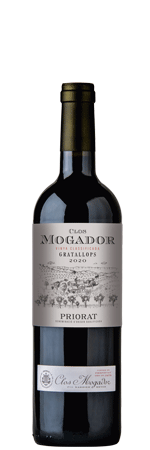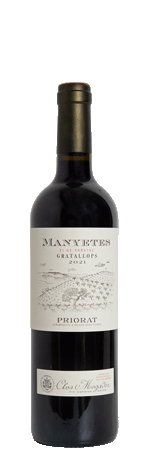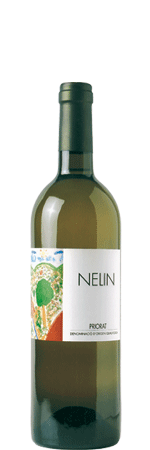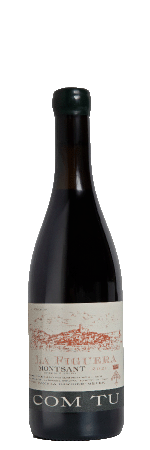+ |
+ |
+ |
+ |
= |
+ |
+ |
+ |
MOGADOR
Documento sin título











MANYETESDocumento sin título






NELINDocumento sin título






COM TUDocumento sin título

















MANYETES






NELIN






COM TU






| Wine Ratings |
1990 |
1991 |
1992 |
1993 |
1994 |
1995 |
1996 |
1997 |
1998 |
1999 |
2000 |
2001 |
2002 |
2003 |
2004 |
2005 |
2006 |
2007 |
2008 |
2009 |
2010 |
2011 |
2012 |
2013 |
2014 | 2015 | 2016 | 2017 | 2018 | 2019 | 2020 | 2021 | |
MOGADOR
|
||||||||||||||||||||||||||||||||
ROBERT PARKER |
92 |
89 |
92 |
90 |
91 |
94 |
95 |
95 |
97 |
90 |
94 |
96+ |
98 |
95 |
96 |
93 |
92 |
94-96 |
96 |
98 |
98 |
97 | 96 |
98 |
99 |
97 |
||||||
PROENSA |
100 |
99 |
96 |
97 |
96 |
100 |
99 |
99 |
100 |
99 |
98 |
98 |
98 | 99 | 99 | 99 | 99 | 99 | ||||||||||||||
PEÑIN |
90 |
90+ |
90+ |
90+ |
90 |
90 |
91 |
92 |
95 |
95 |
95 |
94 |
93 |
93 |
95 |
96 |
96 |
95 |
95 |
|||||||||||||
GUIA VINOS GOURMET |
7,5 |
8 |
8,5 |
7,5 |
9,25 |
9 |
9,75 |
9,25 |
8,5 |
8,75 |
9,25 |
8,5 |
7 |
9,25 |
8,5 |
7,75 |
98 |
99 |
97 |
98 |
98 |
98 |
96 |
98 | 99 | 99 | 96 | |||||
WINE SPECTATOR |
87 |
90 |
87 |
90 |
91 |
92 |
88 |
90 |
91 |
90 |
90 |
95 |
91 |
90 |
92 |
89 |
90 |
88 |
92 |
91 |
90 |
91 |
93 |
93 |
91 |
91 |
93 |
|||||
GUIA TODO VINO |
*** |
*** |
*** |
*** |
*** |
** |
*** |
*** |
*** |
*** |
||||||||||||||||||||||
ANUARIO VINOS: EL PAIS |
2Rac. |
3Rac. |
4Rac. |
4Rac. |
4Rac. |
4Rac. |
4Rac. |
4Rac. |
4Rac. |
95 |
||||||||||||||||||||||
JAMES SUCKLING |
95 |
97 |
||||||||||||||||||||||||||||||
ROSAT MOGADOR
|
||||||||||||||||||||||||||||||||
JAMES SUCKLING |
94 |
|||||||||||||||||||||||||||||||
MANYETES |
||||||||||||||||||||||||||||||||
ROBERT PARKER |
93 |
91 |
93 |
94 |
94 |
93 |
93 |
92 |
94 |
95 |
95 |
96 |
97 |
98 |
95 |
|||||||||||||||||
PROENSA |
96 |
97 |
94 |
94 |
97 |
98 |
95 |
97 |
97 |
98 |
99 |
98 |
99 |
|||||||||||||||||||
PEÑIN |
88 |
92 |
94 |
92 |
91 |
94 |
94 |
94 |
94 |
92 |
95 |
94 |
||||||||||||||||||||
GUIA VINOS GOURMET |
6,25 |
8,25 |
7,75 |
7,75 |
6,75 |
97 |
97 |
96 |
98 |
96 |
97 |
96 | 97 | 98 | ||||||||||||||||||
WINE SPECTATOR |
89 |
88 |
93 |
88 |
87 |
88 |
88 |
92 |
91 |
92 |
||||||||||||||||||||||
GUIA TODO VINO |
** |
** |
** |
* |
** |
** |
** |
** |
||||||||||||||||||||||||
ANUARIO VINOS: EL PAIS |
3Rac. |
4Rac. |
4Rac. |
92 |
||||||||||||||||||||||||||||
JAMES SUCKLING |
94 |
|||||||||||||||||||||||||||||||
NELIN
|
||||||||||||||||||||||||||||||||
ROBERT PARKER |
92 |
91 |
92 |
91 |
91 |
94 |
94 |
94 |
95 | 96 |
96+ |
94 |
||||||||||||||||||||
PROENSA |
87 |
90 |
92 |
95 |
94 |
96 |
||||||||||||||||||||||||||
GUIA VINOS GOURMET |
98 |
87 | ||||||||||||||||||||||||||||||
PEÑIN |
91 |
92 |
93 |
92 |
93 |
90 |
88 |
93 |
93 |
95 |
||||||||||||||||||||||
WINE SPECTATOR |
89 |
87 |
86 |
90 |
88 |
86 |
90 |
90 |
92 |
|||||||||||||||||||||||
ANUARIO VINOS: EL PAIS |
3Rac. |
90 |
||||||||||||||||||||||||||||||
JAMES SUCKLING |
94 |
|||||||||||||||||||||||||||||||
ESPECTACLE
|
||||||||||||||||||||||||||||||||
ROBERT PARKER |
99 |
96 |
98 |
92 |
93 |
98 |
93 |
99 |
96 |
97 | 96 | 98 | 96+ |
98 |
99 |
97 |
||||||||||||||||
WINE SPECTATOR |
72 |
87 |
88 |
90 |
90 |
90 |
91 |
|||||||||||||||||||||||||
PEÑIN |
94 |
97 |
95 |
96 |
GUIA VINOS GOURMET |
94 | 97 | 96 | 98 | |||||||||||||||||||||||
CA LES VIUDES [100 anys]
|
||||||||||||||||||||||||||||||||
ROBERT PARKER |
100 |
|||||||||||||||||||||||||||||||
ARRELS DEL PRIORAT [30 anys]
|
||||||||||||||||||||||||||||||||
ROBERT PARKER |
96 | |||||||||||||||||||||||||||||||
| COM TÚ | ROBERT PARKER |
94 | 94-96 | 93 | 93 | 94 | 93 | |||||||||||||||||||||||||
GUIA VINOS GOURMET |
94 | 94-96 | 97 | 94 | ||||||||||||||||||||||||||||
PROENSA |
92 |
96 |
94 |
96 |
||||||||||||||||||||||||||||
PEÑIN |
90 | |||||||||||||||||||||||||||||||
JAMES SUCKLING |
94 |
|||||||||||||||||||||||||||||||
GRATALLOPS VI DE VILA ROSAT
|
||||||||||||||||||||||||||||||||
JAMES SUCKLING |
94 |
|||||||||||||||||||||||||||||||
| Recognitions |






















| History of the winery |
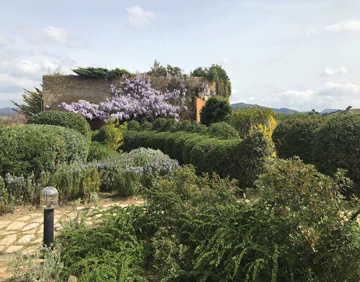
|
René Barbier, descendent of a renowned family of French winemakers came to the Priorat when the wines of the area were completely unknown. He was the first of a group of pioneers who made the New Priorats and has worked successfully towards recovering the region’s unique terroir. In 1979, he purchased a small plot of vineyard in the village of Gratallops which he planted with more Grenache, Carignan and some Cabernet Sauvignon and Syrah. This was the beginning of his Clos Mogador project. It also became Catalonia’s first officially recognised “Vi de Finca” (roughly this is a single vineyard, domain bottled wine certification and is a very prestigious qualification in Spain) which has added to the DOCa. Priorat’s fame. “Vi de Finca” guarantees that all grapes used to make the wine have been sourced exclusively from the Clos Mogador single vineyard for at least the last five years. A few years later, René purchased a further 20 hectares in the guise of Manyetes (vi de vila Gratallops) and Nelin (a white wine). Forever obsessed by terroir, René strives to reveal the classic characteristics of this wine region and confesses that he has a weakness for Grenache. Chronological summary 1986: Purchase of an old farm building in Gratallops to build the winery 1987: Legal founding of the S.A.T. Company (Company which transforms agricultural products) 1989: First vintage 1991: First release of wines from first vintage 1992: First international article in the” Gault et Millau” magazine, written by Pierre Chrisol (Special edition of the magazine focussing on the 1992 Barcelona Olympics) 1993: First export: 80% of production sent to Switzerland 1993: First scores awarded to a Priorat wine by Robert Parker: CLOS MOGADOR 92/100 1998: Winery extension: addition of a barrel room and office space 1999: René Barbier is awarded a medal for Agricultural Merit by the president of the Catalan Autonomous government, Jordi Pujol 2000: First vintage of our white wine: NELIN 2000: Our first vintage of MANYETES 2001: Clos Mogador is awarded 98/100 by Robert Parker and fourth place on the list of the 2003 Top 100 List by Wine Spectator magazine 2004: First vintage of our D.O. Montsant wine: ESPECTACLE 2004: Our wine, ESPECTACLE is awarded 99/100 by Robert Parker 2005: Construction of our logistics warehouse: Logistic-vins in Falset 2007: Clos Mogador extra virgin olive oil is first made and released for sale 2009: Vintage coincides with a celebration of 30 years of vineyards and 20 years of winemaking at Clos Mogador 2010: Creation of Brisfere distillery and the release of La Quinta Essencia dels Llops, a spirit made from distilling Clos Mogador wine and also Clos Mogador lees 2011: 20 years of listings by Robert Parker 2012: From this date onwards, we became certified organic farmers as well as assimilating biodiverse and biodynamic farming methods 2014: We begin to elaborate the wine COM TU, within the D O MONTSANT 2016: COM TU gets 94-96 points over 100 in Robert Parker ‘s list, for the vintge 2016 2018: Vineyard enlargement for Manyetes, Clos Mogador, Nelin and Com Tu |














| Winemaking |
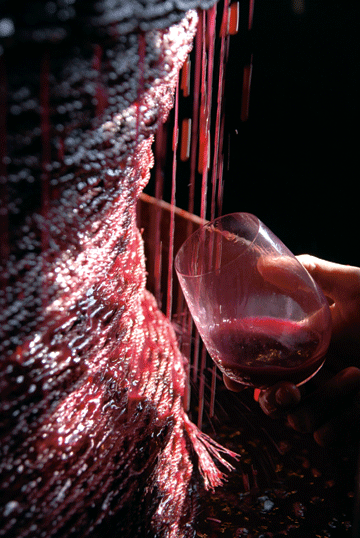
|
THE MAKING OF MOGADOR AND MANYETES All our vineyards are harvested by hand and we wait for optimum phenolic ripeness before we pick. The grapes are quickly taken to the winery in small 10kg crates and are put onto our double sorting tables (we sort first the clusters and then the berries). The fermentation process begins with a spontaneous wild yeast starter culture (pied-de-cuve). This is followed by various pump overs and punch downs in order to achieve optimum extraction. The whole process is checked daily and temperatures are controlled so they do not reach excessive levels. This process takes place in oak “foudres” (large oak fermenting vats) or in open 300 litre barrels. The skin soak period is long (between 4 and 5 weeks) and we decide when to de-vat according to frequent tastings. We then separate the free-run from the press wine and we wait for malolactic fermentation to start. After this, we rack the wine to French oak barrels where aging can take up to 18 months. Once the wine has been bottled, we carefully watch as the wine evolves in the bottle. THE MAKING OF NELIN Grapes are harvested by hand in 10 kg crates in the cooler morning hours to avoid oxidation during pressing. Once the grapes are at the winery, 90% of them are pressed straight away and the free-run juice or first pressing is kept separate from the second pressing. A small part of the total production is left on its skins for around 12 hours before pressing. After pressing, any initial precipitation or sediment is removed and fermentation is initiated by using an indigenous yeast starter culture from the same vineyard. Fermentation takes place at a controlled temperature of between 16-18ºC in both oak barrels and oak fermenting vats and usually takes place over 20 to 30 days. Once the fermentation process is concluded, we proceed to make a first blend of the wine and rack it to barrel, oak vats, cement tanks. THE MAKING OF COM TU COM TU wine, as all of our wines, uses exclusively indigenous yeasts for fermentation; in our purpose of having as little intervention as possible in the process, we do not correct the acidity, the tannins or the pH of the wine, moreover, these are the unperfect factors that give the wine its character. What we do is a selection of the grapes as they come into the cellar, we discard the bad ones. With this Grenache (and only Grenache, without the usual companions such as Carinyena and Syrah) we elaborate our wine COM TU, and this is not only our idea, but also due to the fact that in La Figuera the only variety you will find is Grenache. For this wine we will work combining whole and destemmed grapes, going through different fermentations with different methods, combining macerations in different times; a shorter one, between 10 and 12 days, and another a bit longer, from 35 to 45 days. At the end of the fermentation period we’ll do the coupage, and from there, we’ll start the ageing period. This will happen in 5.000 litres foudres, made of old wood, where the wine will stay for one year. After that it will go onto cement recipients for 4 to 6 months. And finally, we’ll bottle the wine to be ready to go on the market in September, so two whole years have passed before you can drink it. |













| Vi de finca (Estate-bottled, single vineyard wine) |
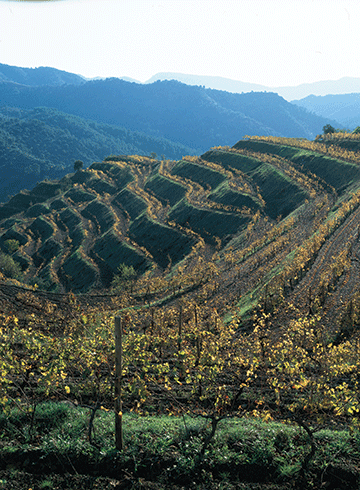
|
For the first time in our country, Clos Mogador, one of the prestigious wines made by René Barbier in the D.O.Ca. Priorat, was awarded the prestigious qualification of «Vi de Finca». “Vi de Finca” is an additional qualification to the D.O.Ca. Priorat certification, which already recognizes this wine. Clos Mogador was the first wine to receive this prestigious qualification in the whole of Spain. It certifies that all grapes used to make this wine over at least the last five years have been sourced from the Clos Mogador single vineyard (five years which can be documented and traced), and at the same time is awarded to a wine which has received international acclaim over at least the last ten years.  Certificat Vi de Finca Certificat Vi de Finca Resolució Vi de Finca Resolució Vi de Finca Qualificació Vi de Finca.pdf Qualificació Vi de Finca.pdf |




















| Vi de vila (Village Wine) |
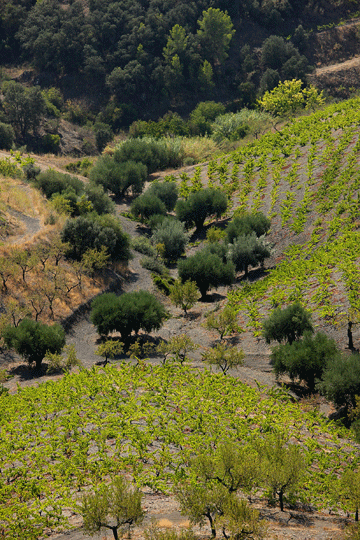
|
The different terroirs which exist within the Priorat wine appellation have given rise to the creation of a new “Village Wine – Gratallops”. Just like in Burgundy, France. The prestige of this winemaking area knows no limits and Manyetes is a good example of this new wine label. Manyetes is the name of a vineyard in Gratallops: A daring venture where vines can barely survive given the poor soil of the region, the intense sunlight and the bleak exposure. The vines are quite literally at the extreme of survival, however, this is exactly what gives rise to the principal essence of Priorat! In this parched, arid area of steeply sloping slate hillsides, our Carignans struggle to survive. This is an extraordinary vineyard in an extraordinary setting. With the idea of bringing a touch of femininity to our wines, we have also planted the Grenache. Today, the work has paid off and visitors to the region can appreciate the vast horizon where the Ebro river gives, from time to time, a modicum of humidity - just enough to allow the vines to survive. The final result is staggering - a harmonious blend of these noble grapes is completely at one with the terroir and gives us a wine with minerality, femininity, subtlety and complexity which warms our hearts. Manyetes is, quite simply, the essence of Priorat transformed into wine .  Certificat Vi de Vila Certificat Vi de Vila Indicació Vi de Vila Indicació Vi de Vila |











| How to best serve our wines |
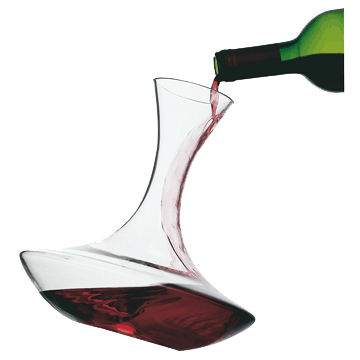
|
By decanting a wine, you are eliminating the solid particles which are in a wine, known as sediment. Evidently this practice is normally reserved for older vintage wines. It is important to follow some words of advice: As these wines tend to be fragile, it is important you carry the wine to the place it will be tasted (at a temperature of 16ºC) two days before tasting, stand it upright so that the sediment falls to the bottom of the bottle and not move it again until it is uncorked. Uncork the wine without shaking the bottle and decant it in one go until you get down to the sediment. A candle will help to see when you reach the sediment. Wines of a certain age do not need to breathe after decanting. It is important you drink and enjoy them immediately. In the case of our wines, it is probable that they develop sediment early on as we do not filter our wines. We believe that this practice tires the wine and impoverishes the vintage, stripping the vintage of its quality and freshness. We make and age our wines based on the use of a high quality grape which does not need any chemical winemaking techniques. Successive rackings during aging help to clean our wines, leaving them brilliant and pure. We carry out these processes at the precise moment according to the moon calendar. We do not pasteurise our wines as we want a living product. We want our wines to continue to develop in the bottle over the subsequent years. The second reason we decant our wines is to oxygenate our wines so that the any reductive wine aromas blow off. Some of our wines, especially Clos Mogador need to breathe to assure an explosive tasting experience. Some grape varieties such as Syrah are reductive and by letting the wines breathe during serving will help. Our wines are profoundly natural and so we use winemaking techniques in the absence of oxygen as much as possible so as not to damage the wines. This means that in order to fully taste our wines, the consumer needs to give back some of the oxygen we have “stolen”. Manyetes Vi de Vila de Gratallops Only decant if there is some sediment Do not decant younger vintages Recommended serving temperature: 16ºC Nelin Our White wine If it is still young, decant it to let it breathe for about 10 minutes If it is between 4 and 7 years old, decant for 20 or 30 minutes Recommended serving temperature: 16ºC Clos Mogador Vi de Finca ? D.O.Ca. Priorat This is the most complex of our wines so decant if it is a young vintage for between 30 min and 2 hours From 5 to 8 years, decant foro between 4 and 5 hours With Clos Mogador vintages of 20 years or more, please consult a knowledgeable sommelier. Or write to us at the winery: closmogador@closmogador.com Recommended serving temperature: 16ºC A bottle of Clos Mogador can easily be drunk up to a whole week after opening without losing any of its magic. |
| The importance of a wine glass |
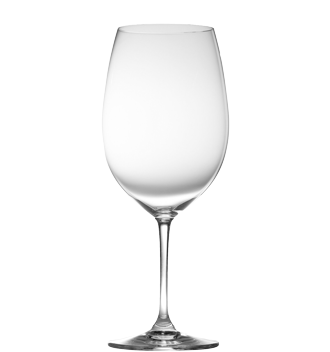
|
Wine glasses are just as important to our taste buds as a good sound system is for music. A great orchestra with bad acoustics can lead to disaster. A great wine in an unsuitable glass can be a fiasco. The glass should be of fine crystal, absolutely transparent, colourless, with a slightly closed rim (depending on the wine to be tasted) in order to fully appreciate the wine’s aromas. You should be able to find various types of wine glasses available to the public. For example: -For a Clos Mogador, The Riedel Syrah wine glass is perfect. -For a white Nelin, a Burgundy glass or also a Viognier Riedel glass would be good. -For Manyetes, a Bordeaux wine glass or also a Riedel D.O. Montsant wine glass would work well. You should be able to find a wine glass, which is suitable for all our wines: the Vinum Riedel glass for the restaurant trade. |
| Storing wine at home |
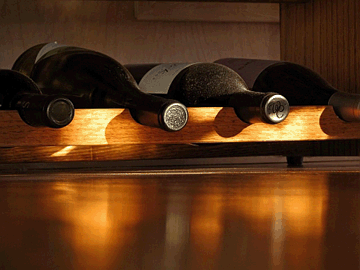
|
1. Always lay the bottles down on their side 2. Complete darkness 3. A constant temperature, ideally 16ºC 4. Between 40% and 50% humidity Too dry, the corks dry out and wine evaporates Too humid and the labels are affected so we eventually don’t know what we are drinking! |
